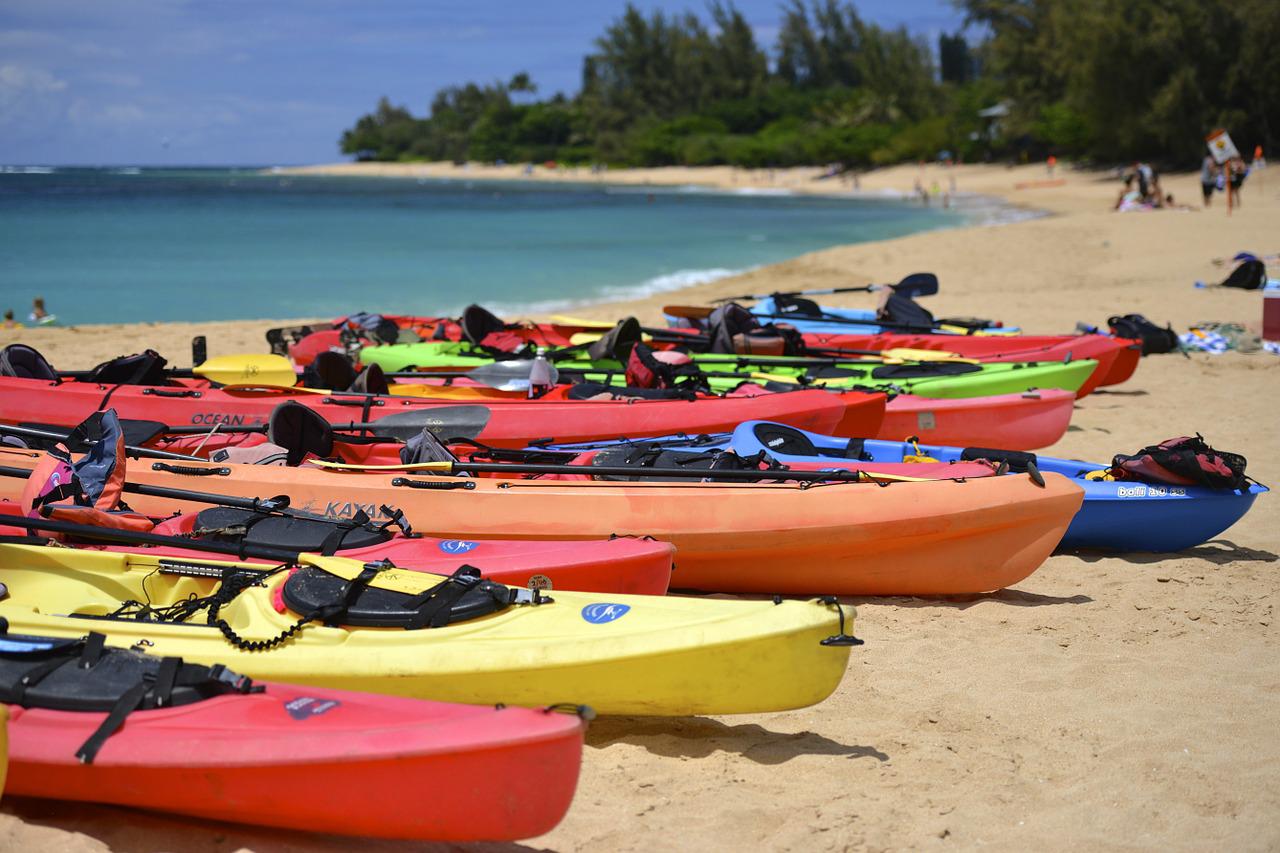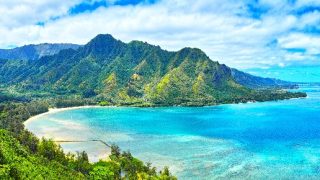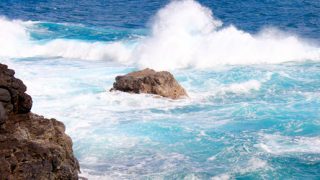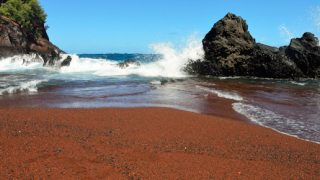Wednesday was a busy day on Kauai with three separate air rescues that picked up hikers in distress. Luckily everyone was safe. However, we’ve seen articles indicating the cost estimate for air rescues can range between $10k and $47k. This brought to mind Hawaii hiking safety and our best tips from decades of experience.
Kauai Fire Dept. spokesperson Michael Gibson said, “Air rescue missions serve as a reminder of the risks that these situations can place upon our residents, visitors, and first responders. When planning outdoor activities such as hiking and camping, please let others know of your intended destination and return time, remain on marked trails, and stay alert of changes in weather conditions.”
The first incident was related to two hikers in distress on the Kalalau trail early in the morning.
A rescue helicopter was dispatched to Kalalau Beach and found the hikers, one of whom had sustained a back injury. They were dropped at the Princevile Airport, where ground units took over. However, after they received an evaluation by paramedics, the county said that the hikers refused medical treatment.
The next incident occurred in the Alakai Swamp areas of Kokee State Park.
In that case, trail maintenance crews notified rescuers of a potential knee injury. A helicopter was dispatched for a short-haul flight, secured the hiker, and flew him to a landing zone in Kokee. From there, paramedics provided help on the scene and reported that they “Later released the hiker who sought medical care via private vehicle.”
Then in the last incident of the day, first responders reacted to a hiker at Kalalau Beach who had a possible head injury.
A helicopter was dispatched, “And found a hiker with possible injuries after being struck by a wave and landing on her head on the sand. First responders applied a c-collar on the hiker, secured her on Air 1, and flew her to Princeville Airport. Responding medics with American Medical Response provided advanced life support and continued efforts on the hiker while in transport to Wilcox Hospital.”
Hawaii hiking safety tips from Beat of Hawaii.
We love to hike. But sometimes, we, too, have had issues. For example, Rob recently looked up while on a trail and tripped on a tree root; Jeff once was looking down instead of forward and ran headfirst into a tree limb that crossed the trail; both of us have experienced unexpected rain and forgot to pack jackets; we once aborted an unplanned hike at Queens Bath because we had the wrong footwear. Things happen but safety first and follow these tips, which include more blunders that we have experienced.
1. Hike in pairs if possible or use trails that are frequently traveled. For example, we have gotten lost in the thick vegetation at Kokee state park ourselves and can speak to how disorienting it can be even in an area with which we are very familiar. Once, we made a wrong turn and then could not right the issue for some time. The same has happened on the Sleeping Giant trail many years ago that had us close to rock climbing.
2. Plan to be back well before dark. In Hawaii, the time between sunset and darkness is shorter than in some other places. We once hiked the strenuous Awaawapuhi Trail at Kokee late in the day and were the last hikers out before dark. That might not have been smart because we would have spent the night on the trail if something happened.
3. Swim only where it is safe. We’ve mentioned before that Jeff saw a visitor drown at Hanakapiai Beach once. That beach, with many hidden rocks in the water and often big waves, is rarely safe.
4. Avoid dehydration. Pack adequate water. It can be very warm in Hawaii and even with cooling tradewinds, dehydration is a real problem when hiking.
5. Stay nourished. Pack enough snacks ad energy bars. You sometimes will be on the trail longer than expected.
6. Proper shoes are important. We’ve seen hikers in slippers on the steep Diamond Head trail. Once you get off cleared trails, you may need to climb narrow ridges or rocks. This may come as a disappointment, but your Crocs will not make the cut.
7. Be prepared for rain. Here in Hawaii, the rain came come seemingly out of nowhere. So for us, we say if we have a rain jacket it won’t rain, but when we don’t pack one, it inevitably rains more than expected.
8. Sunscreen needed. You already know how harsh the sun in Hawaii can be. Sun exposure adds to fatigue. A year ago last fall, we were hiking the tallest dunes in the world in Africa and realized we had no sunscreen and not able to turn back.
9. Pack light but adequately.
10. Watch for loose rocks and slippery tree roots. The ground can be unstable even when it doesn’t appear that way. Rob recently slipped on a wet tree root. Mind your footing. Be aware.
11. Caution at dangerous river crossings. Flash flooding is a real problem in Hawaii and can occur when it seems most unlikely.
12. Stay on the trail. Going off-trail damages the area and leads to erosion too. We’ve been off-trail, mostly by accident, and we don’t recommend it.
13. Avoid cliffs. We’ve seen hikers who have slipped on graveled steep slopes. When there are railings, please don’t go beyond them for photos. Be aware that cliffs can have crumbly surfaces and are highly unpredictable.
14. Lastly, don’t keep valuables in your car. You will likely be parking in a remote area. Avoid trouble.







Arizona (where I live) has a “stupid motorist law” that applies to drivers who venture beyond barricades in potential or actual high water situations. It means that anyone who does this and has to be rescued, pays every penny of the cost of that rescue. I think it makes sense to charge someone for the cost of rescue when that person has disregarded safety signs/barricades or otherwise acted recklessly. I don’t think my tax dollars should go towards such rescues. But accidents happen, and I think it’s a great idea for a state to have some option to collect funds like the Colorado safety card mentioned here. My husband and I would be happy to purchase that kind of card in Hawaii. Thanks for the helpful conversation about this issue.
Hi Glenna.
Thanks for your feedback on this issue. We appreciate it.
Aloha.
Who pays for all of these helicopter rescues?
Thanks for the great tips! I hope hikers take heed. 5 years ago we were 1 mile in on the Pihea Trail, with our goal being the Kilohana Outlook. Although the morning started off beautifully at 7 am with abundant sunshine (we were able to get some epic pics looking down on Napali Coast State Wilderness Park), by 9 am it began to rain and facing some very slick, red-mud uphill climbs and knowing we’d need to reverse course in a few hours, we called it a day and returned to our car. While at the museum a bit later, the ranger told us we were smart to turn back as they do a LOT of rescues from Pihea/Alaka’i. We’re in our 50s and although experienced hikers, breaking an ankle and having to be airlifted out isn’t on our bucket list.Everyone needs to plan well ahead and respect the terrain.
Hi Laura.
Thank you. We are both very familiar with where you were hiking on Kauai. Yes, it can be treacherous there, especially when muddy!
Aloha.
Saw the announcement in yesterday’s Honolulu paper from the Governor. It’s both good and exciting.
Search and Rescue crews never charge for rescue in my home province of British Columbia, Canada. Am I at risk of being charged if I call for rescue in Hawaii?
A great list and reminders! Thanks.
It’s essential these costs are presented to those rescued. Particularly the ones who refuse medical services on arrival. Do they think this is a taxi service?!
Thanks! good tips! Have hiked on Maui, Oahu, Kauai and the Big Island. Wanted to add a couple more – the terrain on many trails is slick as red mud can become a slip and slide. Take a hiking pole or two to steady your balance and slow you down on steep declines. Also take a good hiking app w/GPS so you can stay on the trail and not get lost.
Hi Bill.
Thanks for your first-time comment and the nice additions. Much appreciated.
Aloha.
Who pays for these costly rescues? Do the folks being rescued have to pay anything??
Three more reasons visitors should pay a “rescue fee”
I totally agree. It’s so easy to be careless on someone else’s dime.
As a traveler, I agree with Paul S. We live in Arizona, which does not have such a fee, but travel often to Colorado, where we have purchased their 5-year Colorado Outdoor Recreation Search and Rescue (CORSAR) Card. Arizona is also a major tourist destination, with dangerous climate and geological features for the unaware, so such rescues happen too often.
We are conservative, and do our best to be well informed of local dangers and considerations, but we are also older and you just never know. Such a program seems well within reason, especially for communities who have limited resources compared to the high demands of tourism.